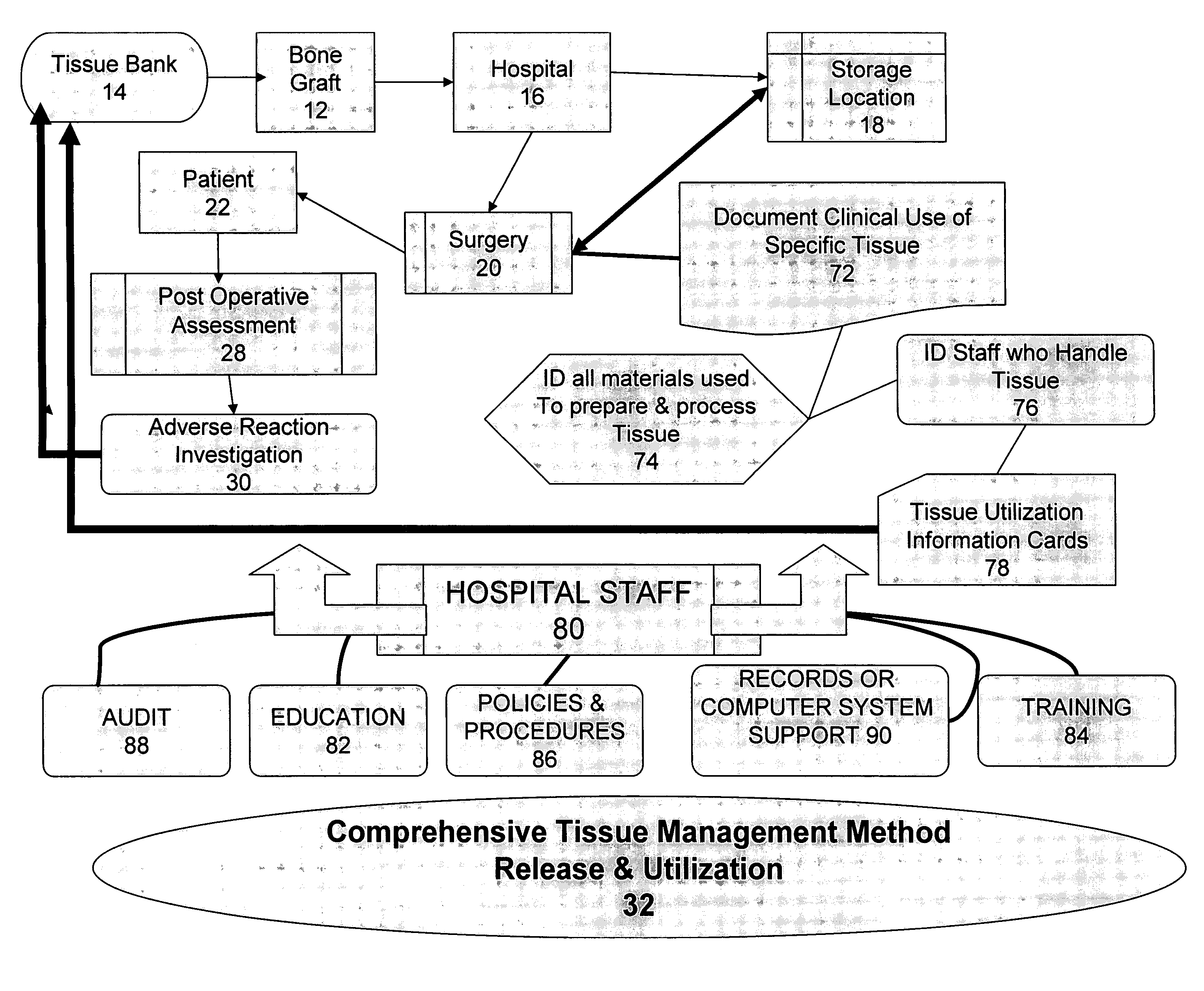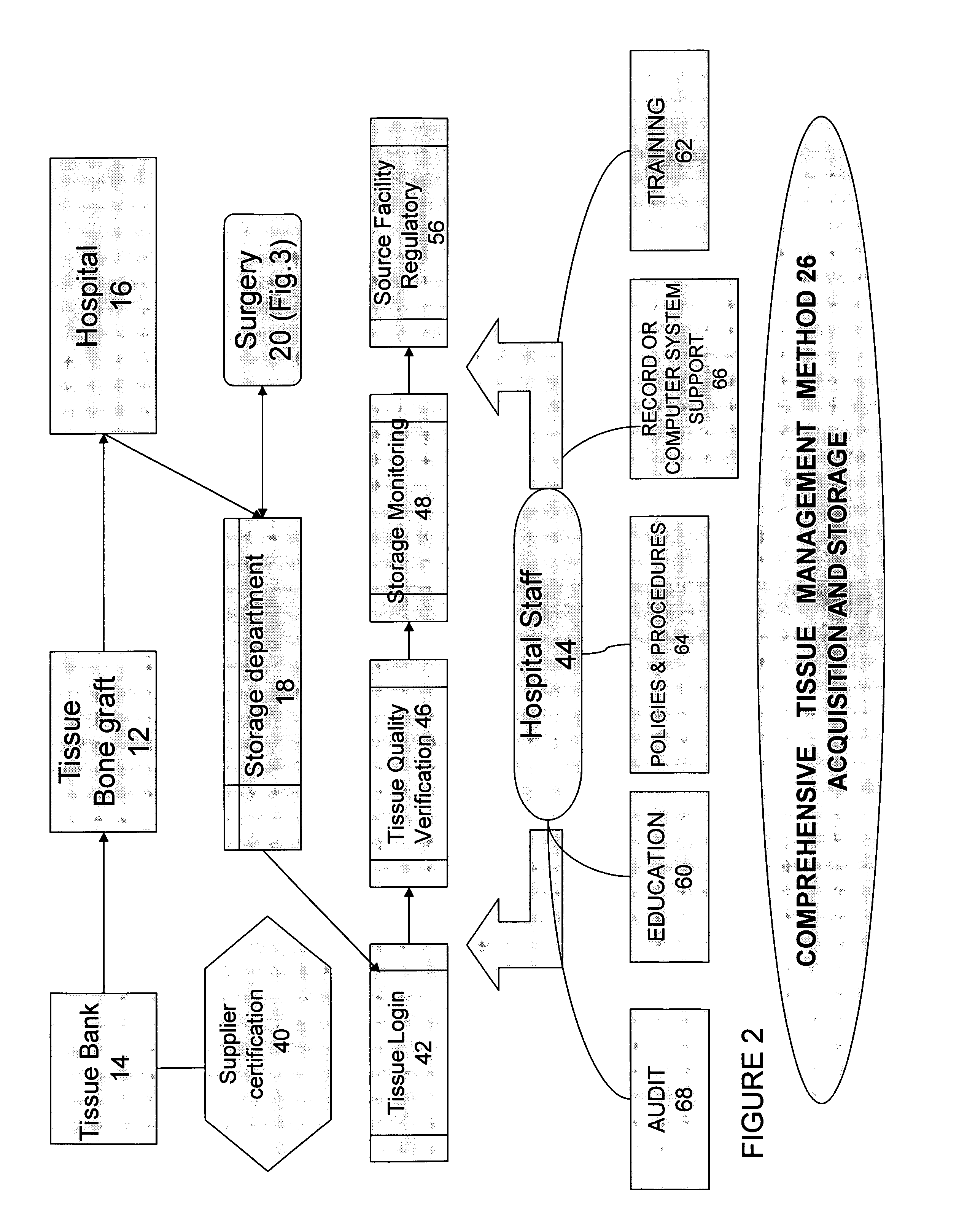Tissues such as bone that are treated with
alcohol, oxidative agent or
irradiation have very low or non-existent risks, but some surgeons are reluctant to use these for fear that the functionality of the product has been compromised.
Use of
antibiotics does not guarantee that
bacteria have been totally removed from the graft and have no effect on viruses.
Infection from contaminated grafts is the greatest risk from
transplantation.
Any transplant operation carries the risk of rejection by the body's
immune system or infection.
Because such immuno-suppressive drugs act to reduce immune activity within the patient, they may also hinder the body's ability to defend itself against infections.
Improper handling of the cells, tissues or organs prior to its use in the transplant operation can adversely
impact its functionality once implanted in the patient, or greatly increase the likelihood of an infection or other adverse reaction by the patient.
Prior to
surgery, TM may be improperly reconstituted.
Blood and tissue banks are typically better than surgical units in hospitals at establishing some procedures for storing cells, tissues and organs; however, once these materials leave their facilities, the safety system can deteriorate rapidly.
Hospitals rarely have established policies and procedures for receiving, handling, storing and reconstituting tissues and organs before their use in
surgery.
Consequently, standards and procedures can differ greatly across the hospital staff to the potential detriment of the patient.
To the extent that the hospitals institute any certification process for their tissue and organ suppliers, the process tends to be directed to issues of price and delivery schedule, instead of whether the supplier is properly registered, licensed, and compliant with prevailing industry
safety standards.
While hospital surgical departments may possess
refrigeration units for storing tissue and organs, their staffs frequently do not know how to monitor and control the equipment.
Moreover, few surgical units possess the necessary training to reconstitute tissue.
The
blood bank and surgical units within the hospital may possess individual staff members with knowledge but they are outside of each other's control.
All of these problems can lead to adverse reactions, including serious infections, illnesses and even death for the
transplant patient.
Yet, such a tracing process is frequently impossible because many hospitals fail to log in the TM that they receive from suppliers and track their use in
surgical procedures.
Quality problems in hospitals culminated in 2005 when there was a major recall of tissue products inappropriately released by several tissue banks.
Yet, repeated attempts to locate tissue products at hospitals that had not been transplanted failed miserably, thereby resulting in other patients receiving potentially contaminated tissue products.
During the same recall, hospital protocols for tracing recipients of the potentially contaminated products were found to be substantially inadequate or entirely absent.
Likewise, most hospitals do not have good systems implemented for gauging compatibility between donors and recipients for organs.
In one incident reported within the industry, organs provided by a donor institution resulted in several cases of
hepatitis C in the transplanted patients.
Because the hospital failed to notify the tissue
bank for 16 months, other infected patients were deprived of treatment while this
disease could be treated, resulting in additional deaths.
In addition, there have been reported cases of physicians taking diseased tissue from in-
hospital patients and
transplanting it into unsuspecting, healthy patients.
These tissues have not been able to be tracked back to the original source, resulting in the recipient's death.
However, hospitals only return 50-85% of these cards to the tissue banks.
But, such test results can be misleading and grossly inadequate to detect diseased tissues.
There are numerous reports of transplant-transmitted infections, including some that resulted in death.
However, these mandates provide no instructions or guidelines to the hospital or tissue
bank for how to comply.
Therefore, such hospitals and tissue banks are left with regulatory and legal liability for their failure to comply, but no tools to use to comply.
While this system maintains the security of
patient information, it does not address the safety of the organ or organ match for the patient.
This exchange program, however, does nothing for tracking the safe
receipt, handling, or use of the organ, or tracing its use after
surgery.
While this transportation container can prevent theft or
contamination of the organ by strangers, it does nothing to prevent unsafe handling, storage, or treatment by the hospital of the organ.
While these types of systems may be useful for keeping track of thousands of biological samples stored within a diagnostic laboratory, they do nothing to ensure the
safe handling, storage, and treatment of the sample within the lab.
Such
inventory control tracking systems can detect the location or number of products, but once again, they do not address the proper handling and storage of those products.
 Login to View More
Login to View More  Login to View More
Login to View More 


